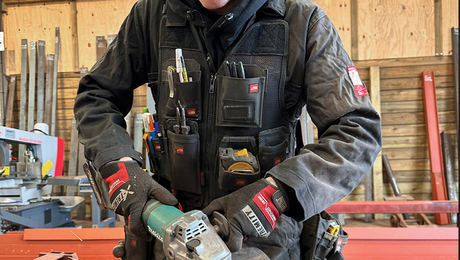I just watched a video on FWW about cutting tenons with a tabl saw. Most people commenting thought it was an unsafe method, and I agree. It reminded me of an article I read in FHB about making crown on a tablesaw. It involved making a jig and running stalk at an angle across the blade. That is, as the piece was moving into the blade, it was also moving across the blade. It definately struck me as unsafe. Any thoughts? Did anyone else see it and think the same thing?
Discussion Forum
Discussion Forum
Up Next
Video Shorts
Featured Story

The Diamondback 701 Vest offers an alternative to traditional tool belts, with adjustable features and the ability to accommodate both clip-on and traditional tool pouches for different tasks.
Featured Video
How to Install Exterior Window TrimHighlights
"I have learned so much thanks to the searchable articles on the FHB website. I can confidently say that I expect to be a life-long subscriber." - M.K.

















Replies
I didn't see the video you are talking about but there are a lot of unconventional things you can do with table saws as long as you understand the saw and take the necessary precautions. There are a lot of folks using table saws that have not had any formal training. Many don't even know how to tune a saw and are in jeapardy just doing ordinary cuts. If you are in the business and use saws everyday, properly, they don't pose much danger.
Cove cuts are one of those unusual uses. You need a straight board for a fence that is clamped on an angle to the saw top. The fence is positioned behind the work but some use two fences, one on each side of the work. You may also need feather boards or some means to keep the work tight to the table and fence. I normally use a stock feeder and a single fence. The resulting cut is fairly rough and requires a lot of sanding or scraping to make the cut surface smooth. In this picture, I wasn't making a cove that would show, I just used the method to remove material from the back of custom made casings, so the edges would fit tight to the wall and jambs. There were a few hundred pieces to do on this job. Cove cutting was faster than using dado blades or router bits to ease the back and didn't create a complete hollow, which can cause stock to warp. I''ve also used the method to make coved crown moldings numerous times.